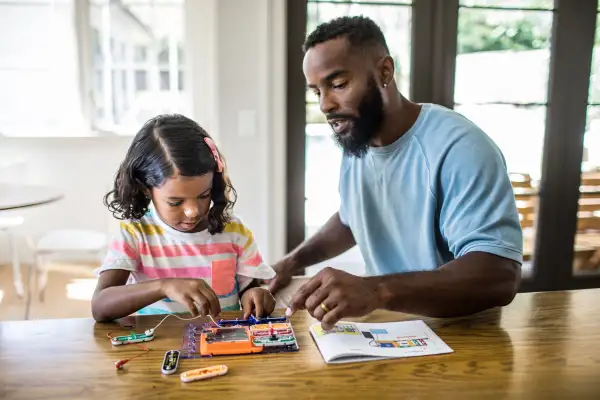The Expanded Child Tax Credit Has Already Reduced the Number of Kids Going Hungry

Only two of the six planned monthly child tax credit payments have gone out so far, but new data shows the money may already be successfully reducing the financial struggles of American families.
Thanks to the American Rescue Plan, the IRS is providing about 35 million parents with half of the 2021 child tax credit in the form of advance monthly payments. Between July and December of this year, eligible families are able to receive up to $300 a month for each child ages 5 and under and up to $250 for each child ages 6 to 17. The first round of checks was deposited on July 15; the second round was sent out Friday.
Parents don’t have to make a dime this year to be eligible for the child tax credit payments, leading some experts to dub it the “biggest anti-poverty program” in decades. And although advocates have noted how difficult it can be for poor families to actually access the funds they’re entitled to, evidence from the U.S. Census Bureau’s latest Household Pulse Survey suggests the money is already reducing the prevalence of issues like hunger.
The survey, which contains self-reported information from over 64,000 households, found that the overall number of families — both with and without children — experiencing food insufficiency decreased by just under 1% after the July 15 child tax credit payment.
However, the percent of families with children who said they didn’t have enough to eat dropped by nearly three times as much as the total population. Conversely, adults without children actually saw a slight increase in the percentage of people who said they didn’t have enough food.
While these numbers may appear small, the report notes that households with children are usually more likely to deal with not having enough food than people who don’t have kids. This is what leads Census Bureau researchers to suggest there’s a direct link between the new data and the child tax credit.
The payments seemed to also help people who have had difficulty paying bills. The percent of families with children who reported having a difficult time covering expenses dropped from 31.5% to 29%. Childless households saw an increase from 20.8% to 21.8%.
Families who reported receiving the child tax credit payment were asked additional questions about how they’ve been using the money. Much like with the pandemic stimulus checks, the survey found that recipients have been spending the cash on everyday expenses.
Some 47% of respondents said they’d spent at least some of their July payment on food, making it the most common answer. Parents also said they used the money for utility bills like gas, electricity and internet (28%); clothing (24%); paying off debt like credit cards or student loans (20%); and putting the money toward savings and investments (20%).
For more on the child tax credit, including what to do if yours hasn’t come yet, if you have a baby in 2021 or your income changes, see our guide here.
More from Money:
How to Get the Child Tax Credit Payments if You Have a Baby in 2021
4 Million Kids Are Missing out on the New Monthly Child Tax Credit Payments
When Is the Next Child Tax Credit Payment? Here's the Schedule for the Rest of 2021

